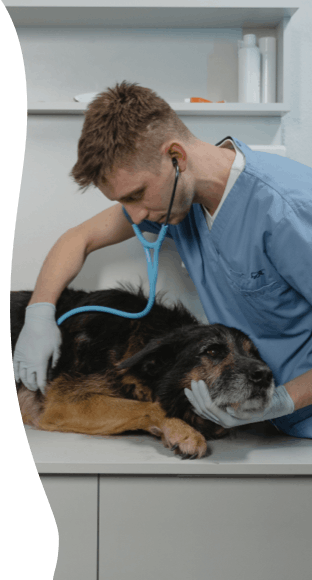Can Dogs Get Back Lost Muscle While Taking Prednisone
What are Atrophy of Muscles?
Aging dogs will often begin to suffer from atrophy of muscles, especially when they have a reduction of physical activity. They may be suffering from bone and joint pain from arthritis. Large breed dogs will generally age faster than smaller breed dogs. Senior dogs that suffer from atrophy of muscles will generally show a progression of signs, and will first start to appear in the hind legs and hips. If you notice severe muscle atrophy or atrophy of the muscles in the neck and head, you should immediately contact your veterinarian.
There are certain illnesses and diseases that can cause atrophy of muscles in dogs. There are usually other signs that will help your veterinarian properly diagnose the illness. Many times myositis or inflammation of the muscle can cause atrophy of the muscles. Myositis is caused by an abnormal reaction of your dog's immune system against the muscles. This can happen to only one muscle or to a group of muscles. Degenerative myelopathy is another disease that affects the spinal cord and then the limbs. Muscle atrophy, unsteady gait and paralysis are some of the symptoms of degenerative myelopathy.
Atrophy of muscles in dogs is very common in aging dogs, dogs that are ill or dogs that cannot exercise properly. Muscle atrophy is when there is a loss of muscle mass. It is noticeable when parts of your dog's body appear weaker and thinner than usual. Generally, the hind legs, hips, face or neck will look noticeably thinner due to the loss of muscle mass.
Vet bills can sneak up on you.
Plan ahead. Get the pawfect insurance plan for your pup.
Compare plans

Symptoms of Atrophy of Muscles in Dogs
Atrophy of muscles in dogs can come on slowly due to aging or it can quickly occur, causing a younger dog to look sunken or thinner. Any time you notice that there is a difference in your dog's muscles, either they look swollen or thinner, you need to have your veterinarian look your dog over. Your veterinarian will need to determine if the changes are normal or if there is an underlying condition that needs to be addressed. Signs of atrophy of muscles in dogs include:
- Progressive rear limb weakness
- Ataxia
- Limbs unable to support your dog's weight
- Paw dragging
- Crossing the legs as they stand or walk
- Thinner, sunken muscles
Top
Causes of Atrophy of Muscles in Dogs
Atrophy of muscles in dogs can occur for several different reasons. An aging dog can experience atrophy of muscles. As dogs age, their nutritional needs change and they are not able to process protein in the same way. Therefore, senior dogs may need a specialized diet with easily processed protein sources to help them maintain muscle mass.
Illness or disease can also cause your dog to experience atrophy of muscles. If your dog experiences quick atrophy of the muscles, then you will need to have your veterinarian determine what is causing the problem.
Simply not using their muscles can cause your dog to experience atrophy of muscles. Dogs that do not get much exercise or confined to small cages will not be able to develop muscle tone and their muscles will then atrophy from disuse.
Top
Diagnosis of Atrophy of Muscles in Dogs
Your veterinarian will begin by taking your dog's medical history as well as asking questions about your dog's normal daily activities and exercise routine. Your veterinarian will try to determine if your dog's atrophy of muscles is from aging, illness or disuse. A physical examination will be conducted allowing your veterinarian to feel for any lumps or masses that could be causing problems.
A complete blood count, biochemistry panel, urinalysis and fecal exam will be conducted to rule out possible causes. X-rays, CT scan and MRI may help your veterinarian determine the cause of your dog's muscle atrophy. An ultrasound may also be conducted to rule out degenerative myelopathy or intervertebral disc disease.
Top
Treatment of Atrophy of Muscles in Dogs
Once your veterinarian has determined the cause of your dog's atrophy of muscles, they will discuss with you the different treatment options. If your dog is not suffering from an illness or disease, then a regiment of regular exercise and proper nutrition will be prescribed. If your dog is overweight, they may need to be put on a low-calorie diet with plenty of exercise to build up their muscle tone and mass.
Dogs that are suffering from an illness or disease may be given medications, depending on the illness and what medications might be required.
Top
Recovery of Atrophy of Muscles in Dogs
Generally, dogs that are suffering from atrophy of muscles due to aging or from disuse will have a fair prognosis, if they have not had any previous treatments. They will need to maintain a healthy exercise program that is designed to build muscle and be given appropriate nutrition for their age and activity level.
Dogs that are suffering from atrophy of muscles due to an illness or disease will have a more guarded prognosis. The outcome for these dogs depends on the cause of the problem and how they respond to medications and treatments.
Top
*Wag! may collect a share of sales or other compensation from the links on this page. Items are sold by the retailer, not Wag!.
Can Dogs Get Back Lost Muscle While Taking Prednisone
Source: https://wagwalking.com/condition/atrophy-of-muscles
0 Response to "Can Dogs Get Back Lost Muscle While Taking Prednisone"
Post a Comment